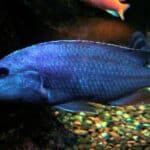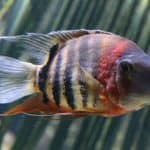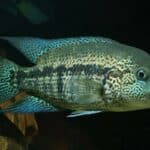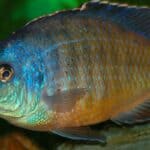If you’re in the market for a colorful fish, the Electric Yellow Cichlid comes to mind as a fantastic option. With its vibrant yellow color, this African Cichlid is sure to make your aquarium shimmer like gold.
But keep in mind that this fish is aggressive as it is colorful and eye-catching. For this reason, you need to know which tank mates are best suited for Electric Yellow Cichlids.
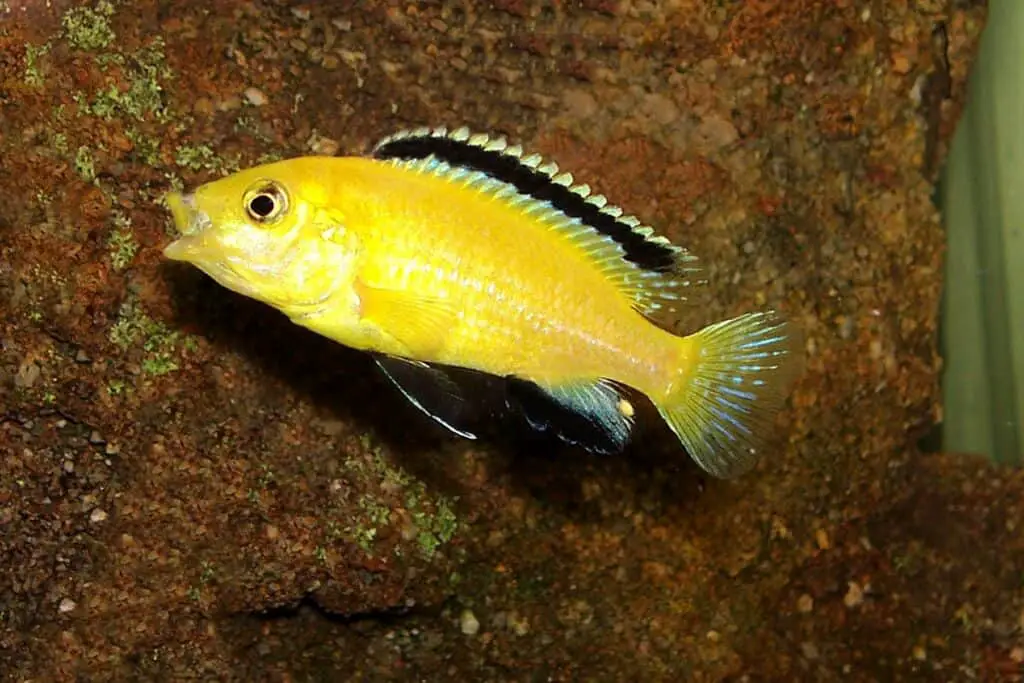
Species Summary
The Electric Yellow Cichlid (Labidochromis Caeruleus) is a species of tropical freshwater cichlid belonging to the Cichlidae family. These cichlids are found in Rift Valley in Africa, specifically in Lake Malawi. The species’ natural environment inhabits two types of biotopes — on the rocky shores and in the beds of Vallisneria existing in Malawi — inhabiting between 2m and 35m in depth.
Like many African Cichlids, the Electric Yellow Cichlid stands out mainly for its stunning color.
As a relatively common species in aquariums, most specimens are bred in captivity; although very rare, animals collected from nature are still found. It is an excellent species for aquarists who already have little experience with alkaline water tank tanks, as they can be susceptible to changes in water parameters.
All in all, the Electric Yellow Cichlid is a very hardy fish and relatively easy to spawn, making it ideal for aquarists of all levels.
Electric Yellow Cichlid Care Guide
Electric Yellow Cichlids are very hardy and can live in a regular community tank without problems. This species lives in virtually any cichlid aquarium setup and, in addition, can live either alone, in pairs, or accompanied by other fish. However, they can become a little aggressive towards smaller fish.
Continue reading for more information on how to care for this fish.
Tank Size
These Cichlids reach a pretty large size and are active fish, hence the need for an aquarium with reasonable space. They require a large aquarium with dimensions starting at 40″ x 15″ x 15″. This size accommodates a small group well.
For community tanks, the size must be more significant. The greater the space available, the better the welfare of the fish.
Tank Mates
They can be aggressive towards smaller fish, so keep them with fish of the same size or larger. Smaller fish and anything that fits in their mouths can become food.
The best aquarium companions for the Electric Yellow Cichlid are other Mbuna fish (groups of fish that belong to Lake Malawi). However, try to keep a good mix of other fish and cichlids, such as Electric Blue Cichlid, Demasoni Cichlid, Strawberry Peacock Cichlid, Rainbow Cichlid, Rainbowfish, Rainbow Shark, Siamese Algae Eater, and Clown Loach.
Same Species Tanks
The Electric Yellow Cichlid is often kept as a single species in biotope-type aquariums, mimicking the species’ original location.
Keep in mind that they will attack and kill any other male of the same species unless the aquarium is enormous.
Water Parameters
They are incredibly resistant fish, which support a wide range of parameters, as long as you tend to the alkaline side. This species is also highly susceptible to pollutants in the water.
The perfect temperature for keeping the Electric Yellow Cichlid in an aquarium is 75 to 82 F. The ideal pH range is between 7.8 to 8.6.
What to Put in Their Tank
An aquarium heater and a filtering system are essential to keep the tank with Electric Yellow Cichlid healthy. The filtration system must be well-sized to create a moderate flow.
These fish enjoy a well-lit aquarium with plenty of hiding places. To provide territories and hiding places for Electric Yellow Cichlids, add rocks grouped in aquascaping, thus forming different caves of different sizes. The stones must be carefully buried and supported against each other; there is always a risk of cave-ins, a fish could get stuck, or rock could hit the glass.
Of course, don’t forget to keep areas open for Cichlids to swim freely!
Common Diseases
If you keep the tank and water quality in optimal conditions and give these Cichlids a good quality diet, they should thrive in your colorful aquarium. Just remember to always quarantine new fish before placing them in the main aquarium.
Food and Diet
This species, like other Cichlids, is an omnivore; they are generalists with a very varied diet.
In captivity, their primary diet should be rich in vegetables. A good combination of using high-quality commercial feed and live, fresh or frozen foods, will make these fish look much more vivid and their behavior closer to natural.
Set a time to feed the fish, always trying to give an amount that can be consumed quickly.
Lifespan
In an aquarium with all the correct parameters kept stable and with an ideal diet, this animal can live around 8 years, with the most common being around 6 years.
In nature, these animals are prone to live less, as they are predisposed to diseases, attacks from other animals, and environmental causes.
Appearance
The Electric Yellow Cichlid has the burly appearance of Lake Malawi cichlids, with a bright yellow-colored body with white and black stripes on the fins.
Size
The Electric Yellow Cichlid can quickly grow to 4 inches in length when well-fed and cared for.
Behavior and temperament
It is a tropical fish species with aggressive behavior and should not be kept in a standard community aquarium. It must live in an environment suitable for the species, with fish of the same size and behavior. Their aggressiveness is more restricted to males of the same species and other fish of similar patterns and colors. As they are harem fish, keeping at least one male and three females is always recommended so they won’t be too stressed because of male pursuits.
They are very active animals, occupying practically all strata of the tank; however, they like to stay in caves formed by decoration.
Breeding
The Electric Yellow Cichlid is a polygamous fish, meaning you must breed a male with several females. Mating takes place in a place previously chosen by the couple, and the male attracts the female in a ritual of movements. The female will lay the eggs in a spot on the ground (usually a surface such as a rock), and the male will then fertilize.
Being a buccal incubator, the female places the eggs in her mouth for hatching, at which point the male can be taken out of the aquarium. Fry spawns in 10 days and is kept in the mother’s mouth for about two weeks or three weeks. At the end of the incubation period, the fry is released, fully formed, and self-sufficient to look for their food.
Gender Differences: Male vs Female
There is apparent sexual dimorphism in adult Electric Yellow Cichlids. Males are more corpulent and have brighter colors with more intense dark stripes.
The “egg spots” present in the anal fin can also help in differentiation. Females are smaller and paler in color.
Electric Yellow Cichlid Fun Fact
- They can be found on the lake on the west coast between Charo and Chizi Poin and on the east coast between Cape Kaiser and Lumbaulo. Population example: Nkata Bay; Lions Cove; Ruarve; Chadaga.
References
Daget, J., Gosse, J. P., & Thys van den Audenaerde, D. F. E. (1986). Check-list of the freshwater fishes of Africa (Catalogue des poissons d’eau douce d’Afrique), CLOFFA. ISNB Bruxelles/MRAC Tervuren/ORSTOM Paris, xiv.
Pezeshk, F., Babaei, S., Abedian Kenari, A., Hedayati, M., & Naseri, M. (2019). The effect of supplementing diets with extracts derived from three different species of macroalgae on growth, thermal stress resistance, antioxidant enzyme activities and skin colour of electric yellow cichlid (Labidochromis caeruleus). Aquaculture Nutrition, 25(2), 436-443.
Higgs, D. M., Barkley, A. N., & Radford, C. A. (2011). Acoustic communication in the electric yellow cichlid, Labiochromis caeruleus. The Journal of the Acoustical Society of America, 129(4), 2435-2435.

